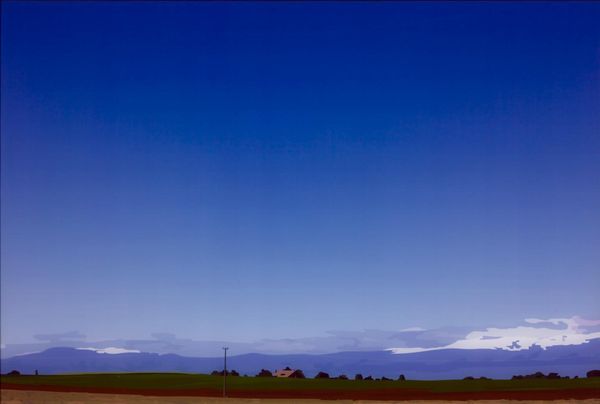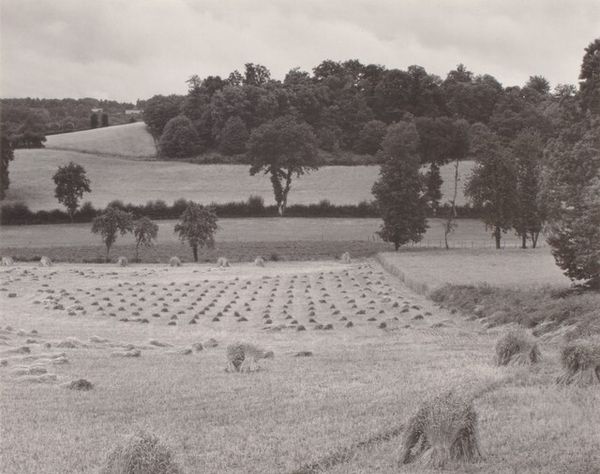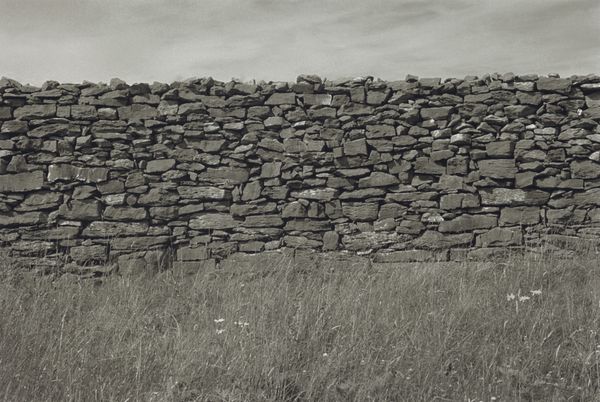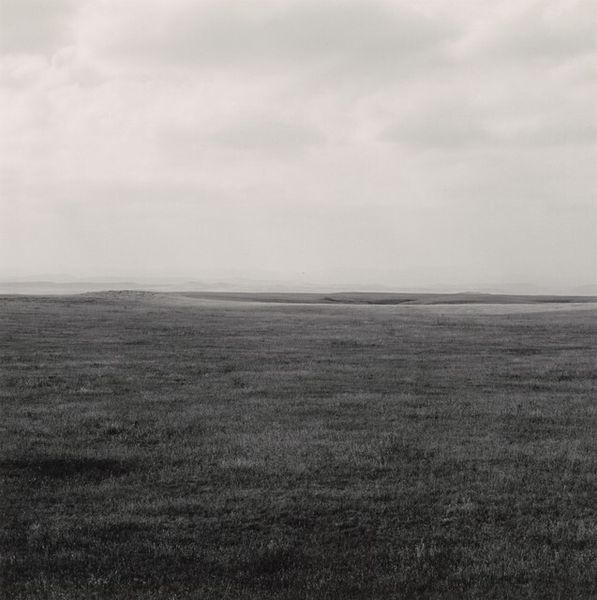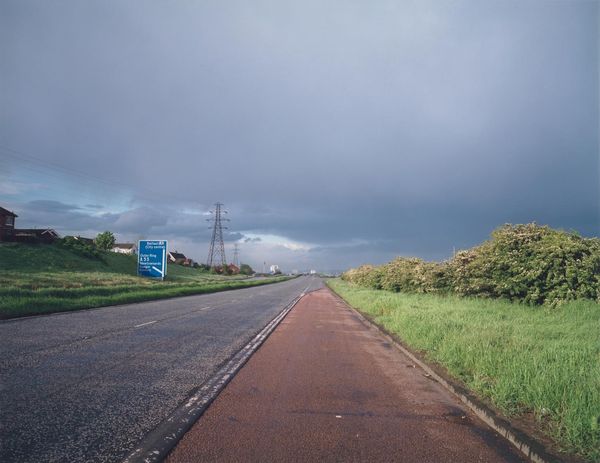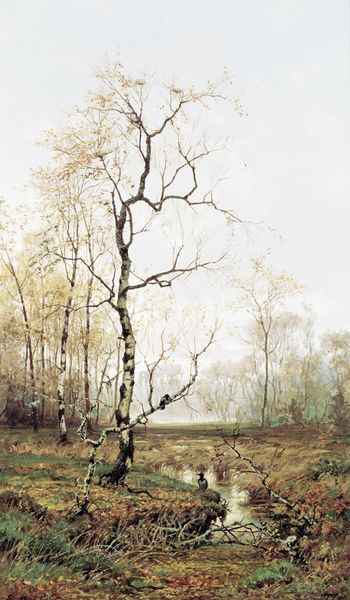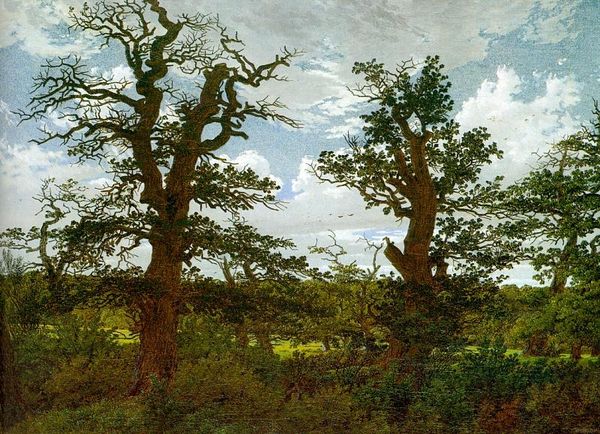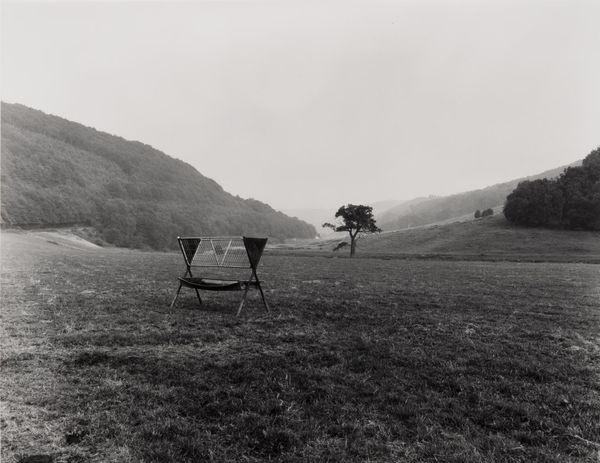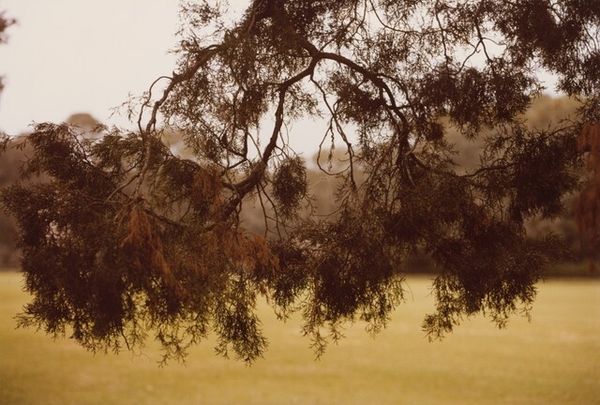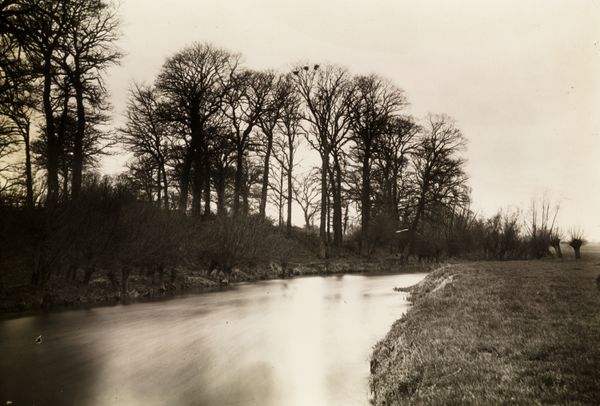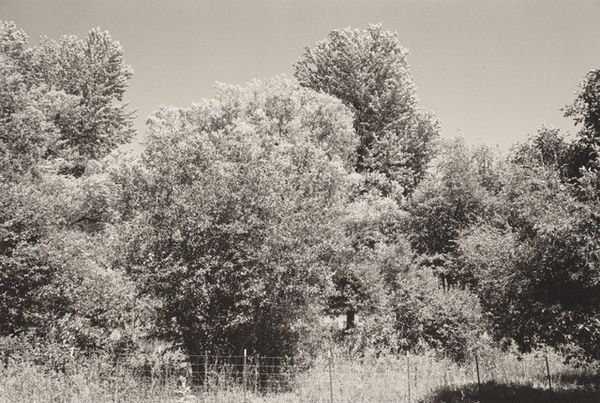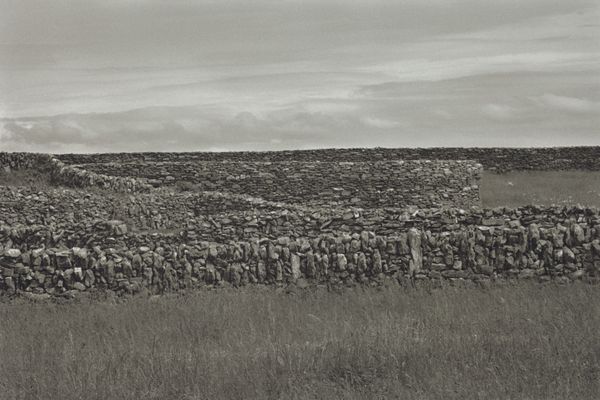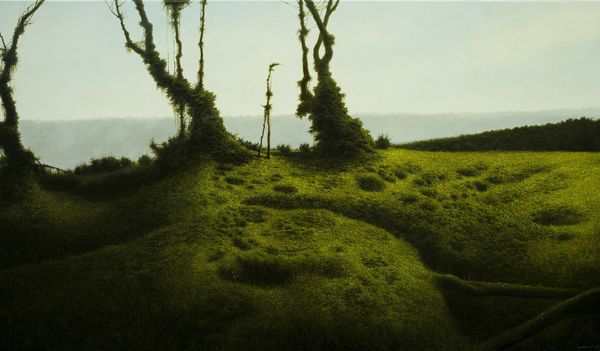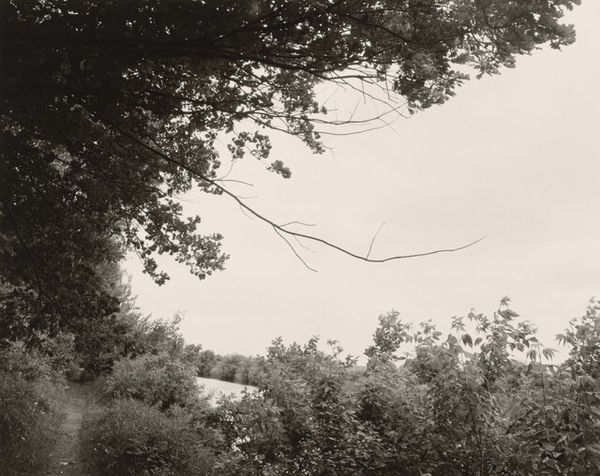
Dimensions: support: 680 x 880 mm
Copyright: © Paul Graham; courtesy Pace and Pace/MacGill Gallery, New York | CC-BY-NC-ND 4.0 DEED, Photo: Tate
Curator: Paul Graham's photograph "Union Jack Flag in Tree, County Tyrone" presents a seemingly idyllic Irish landscape disrupted by a small British flag atop a lone tree. The support is 680 x 880 mm. Editor: It's striking how such a simple, almost pastoral scene is rendered unsettling by that flag. It feels like an intrusion, a claim staked on contested ground. Curator: Graham's work often explores the banality of conflict through a matter-of-fact, almost detached style. Think about the materials here; the photographic paper itself becomes a document, an artifact bearing witness to a specific, fraught context. Editor: Absolutely. The flag isn't just a symbol; it's an imposition of identity, specifically in a region with a complex history of sectarianism. How do we read this in light of ongoing power dynamics and historical trauma? Curator: It forces us to consider the labor embedded within what appears simple. The act of placing the flag, the manufacturing of the flag itself, all part of the larger political theatre. Editor: It's a stark reminder that even the most serene landscapes are never truly neutral; they are always shaped by power and history. Curator: Indeed. A quiet, powerful piece to consider material and meaning. Editor: Yes, a loaded landscape prompting necessary conversations.
Comments
tatebritain 6 months ago
⋮
http://www.tate.org.uk/art/artworks/graham-union-jack-flag-in-tree-county-tyrone-p79343
Join the conversation
Join millions of artists and users on Artera today and experience the ultimate creative platform.
tatebritain 6 months ago
⋮
From 1984 to 1986, Paul Graham documented Northern Irish locations featured in news reports of the Troubles. During his first visit, Graham was stopped by a British military patrol suspicious of his camera. As they left, he took a shot with his camera hanging from his neck. The photograph became a ‘gateway’ for Graham’s Troubled Land series. He felt his other images of rioting, murals and destruction, ‘weakly echoed what I saw in the newspapers. This one image did not’. ‘There were people walking to shops and driving cars – simply going about their day, but then there was a soldier in full camouflage, running across the roundabout.’ For Graham, the image ‘reintegrated the conflict into the landscape ... it was a conflict photograph masquerading as a landscape photograph.’ Gallery label, November 2024
